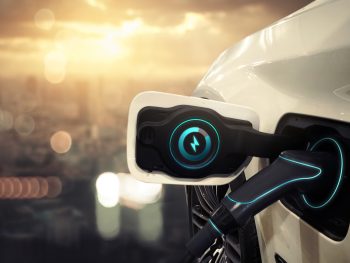Journey analysis could drive fleet EV adoption, advises Arval
Car fleet operators could drive adoption of electric vehicles faster by factoring in analysis of journey types.

A more strategic approach to the adoption of electrification for car fleets could accelerate adoption
Few businesses currently consider the type of journeys being taken, for example – rural, urban and motorway – when electrifying their company car fleets, according to Arval.
Among businesses already operating electric vehicles, just 3% are using them first in urban areas due to air quality benefits and only 2% on those routes thanks to the inherent better access to charging, according to its 2023 Mobility Observatory Barometer.
Overall, more than a third (38%) said that they haven’t thought about initial use of their EVs on different road types, while more than half (58%) said that they planned to use them effectively everywhere.
Similar research on continued use of petrol and diesel cars already unearthed a lack of consideration of journey types. More than three-quarters (79%) said they had no plans to use diesel or petrol for longer on motorways or rural routes. Just 9% plan on operating internal combustion engine cars for longer on motorways due to concerns about EV range.
Shaun Sadlier, head of Arval Mobility Observatory in the UK, said it was interesting to contrast these findings from electric car operators with responses to the same question from users of electric vans.
“When it comes to eLCVs, 30% plan to carry on using ICE in rural areas and on motorways because of concerns about charging, while 23% believe air quality to be less of an issue in those locations. This is quite a sizeable minority that is taking what is arguably a more strategic approach to the adoption of electrification, certainly compared to cars.”
He added that consideration of different journey types could prove a key tool in helping fleets identify cars that are ‘low-hanging fruit’ for easy electrification and those where it may prove better to hold off as vehicle ranges continue to improve.
Sadlier continued: “By undertaking the same strategic view and analysis that van fleets appear to be doing, car fleets may find it easier to electrify and drive adoption even faster amongst drivers who have not yet made the change to an electric car.”
Arval research on electrification considerations:
Where do you plan to use the 100% battery electric vehicles when it comes to your passenger cars (base: car operators already using at least one electric car)?
Both in urban areas and outside of cities on motorway and rural routes: 58%
In urban areas first because of air quality concerns and/or regulations: 3%
In urban areas first because charging availability is good: 2%
We don’t think about where our electric cars will be used: 38%
Are you planning on using diesel or petrol vehicles for longer on motorway and rural routes (base: car operators already using at least one electric car)?
Yes, because range and charging are a concern: 9%
Yes, because air quality is less of an issue: 8%
No, we are not planning on using diesel or petrol vehicles for longer on these roads: 79%
Are you planning on using diesel vans for longer on motorway and rural routes (base: van operators already using at least one electric van)?
Yes, because range and charging are concerns: 30%
Yes, because air quality is less of an issue: 23%
No, we are not planning on using them for longer on motorway and rural routes: 58%
Further details on the the Arval Mobility Observatory and the 2023 Barometer findings are here.












